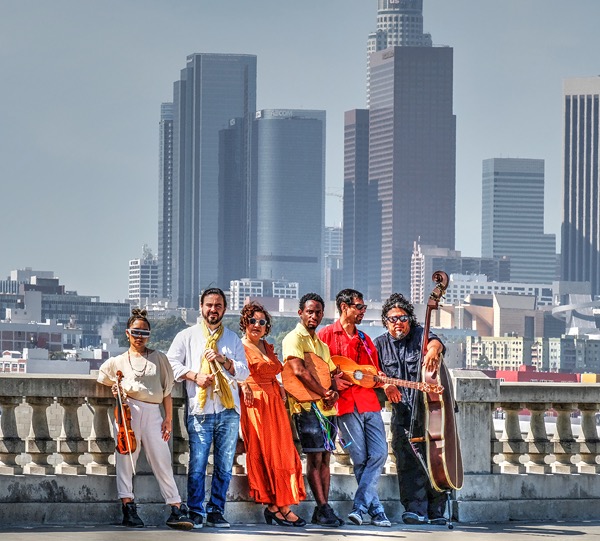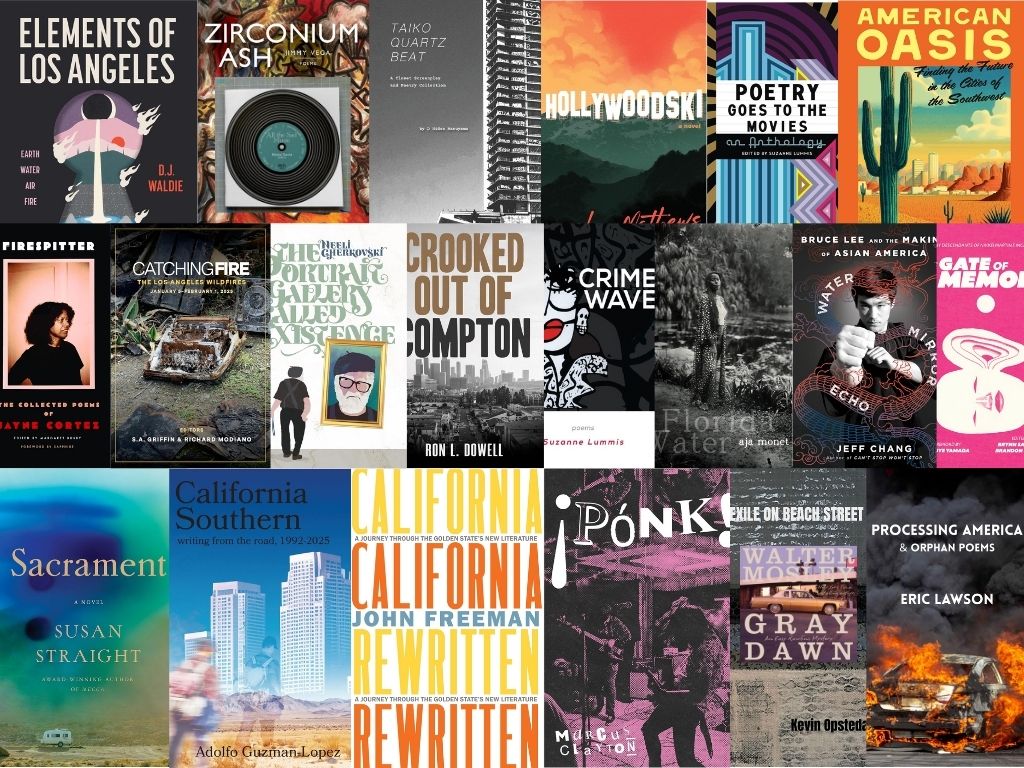This article is produced in partnership with KCET Artbound.
nvisible people, the truth is we're all the same/The concept of race was implanted inside your brain
It's time to start all over/You best believe we're taking over"
Bardo Martinez, lead singer of Chicano Batman, sings these empowering lines on the band's album release, "Invisible People" (2020). Using their musical creativity and their alchemy of indie, soul, psychedelic, funk and rock, Bardo (vocalist and keyboards) along with his bandmates Eduardo Arenas (bassist), Carlos Arévalo (guitarist) and Gabriel Villa (drums) are taking listeners on a quest for a sound that pays homage to their Chicano musical ancestors, but also moves it beyond those traditions.
Bassist Eduardo Arenas says the band came of age on the sounds of hip-hop, cumbias, salsa along with various forms of rock, not just simply Chicano music but sounds from all over the globe. When the band formed in 2008, Arenas and Martinez were members of the student organization MEChA, "We were progressive students, looking to further the Latino agenda," recalls Arenas. From those ideas, the two friends started Chicano Batman to make space for members of their community to celebrate the notion of expressing themselves creatively, outside of the suffocating confines of a racist system that places more importance on certains sounds and communities.
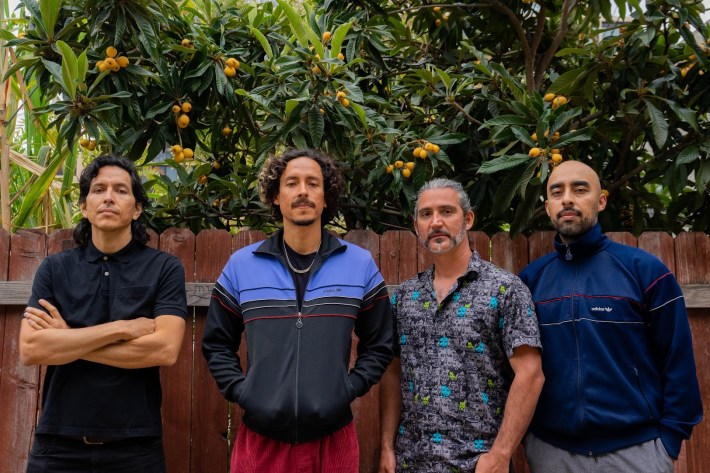
Chicano Batman's origin story — struggling to be seen and acknowledged in a racist society — is one that seems to replay itself again and again with each epoch of Chicano rock. As each group of artists break down barriers, more challenges present themselves to be overcome. "As Chicano Rock artists, we carry that on our shoulders but as day today, the way we live, the way we voice our opinions, the way we see the world through the lens of progressive, that carries the banner of what it is to be a Chicano in this world of music," says Arenas.
For this reason, Chicano Batman is not alone in trying to make their mark. There is a new era of Mexican American musicians who have created their own original lane, and their musical output stands on the shoulders of generations who have come before such as Los Lobos, Alice Bag, El Chicano to name a few.
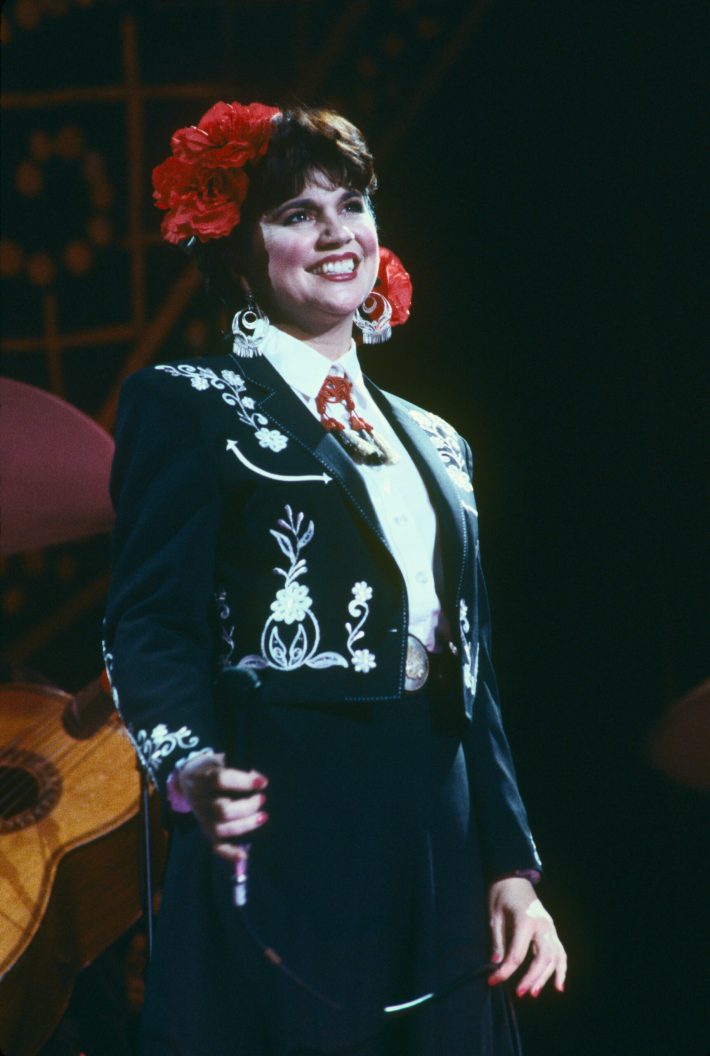
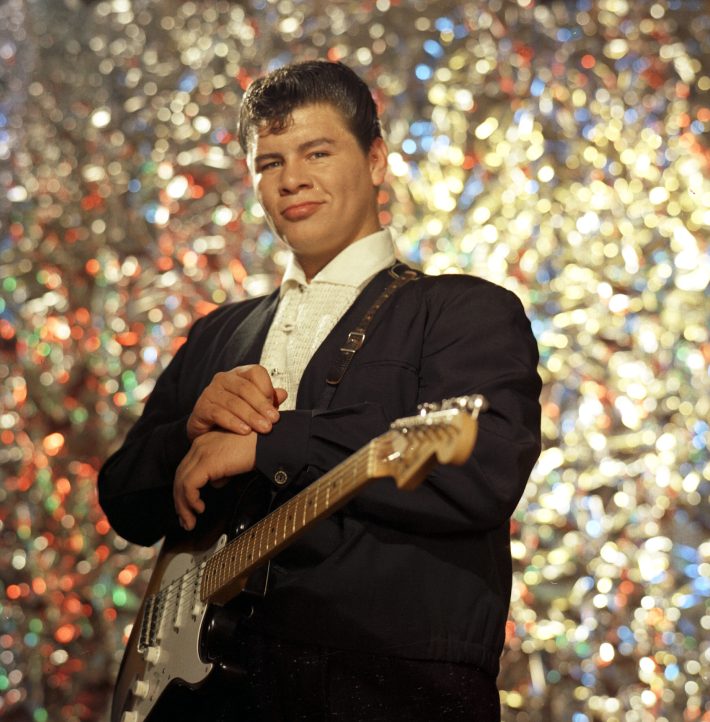
Back to the Beginning
The origins of the Chicano rock sound begin in part with The Eastside Sound from the city of Los Angeles occurring in the late 1950s through the 1960s. It began when young Mexican Americans were looking for new ways to express themselves and feeling a need to be seen. Young Mexican Americans who were either born in the U.S. or were brought to the country at an early age were eager for their own creative outlet as previously had little to no means to do so. The world was closed off to them and Mexican Americans frequently found themselves treated as second-class citizens, denied a good education, fair wages, frequently drafted in U.S. wars, and unwelcome in predominantly white spaces. As a result early Chicano musicians began to form bands, recording their own music and putting on their own shows. Playing car shows where members of the community would organize local events showcasing classic cars (and later on low-riders), not mention high school dances and anywhere they could perform allowed many of these musicians to create names for themselves and provided a sustainable income.
Despite the extensive segregation of the time, within rock 'n' roll circles white, Black and Latin cultures co-mingled. They all listened, made music, and were inspired by Richard Valenzuela a.k.a. Ritchie Valens from the neighborhood of Pacoima. Valens tragically passed away in the late winter of 1959 at the age of 17, but in a short period of time, he represented what was possible to a generation of musicians who would come after. His ability to sing in English and Spanish provided a sense of representation and validation for who Chicanos were and could be.
In San Antonio, Texas, a young Sunny Ozuna took a similar trajectory. He recorded in both languages and his music would be influenced by many forms ranging from soul music to Tejano to bolero. His iconic LP "Smile Now...Cry Later" released in 1966, would solidify his place in the Chicano rock and soul music lexicon. Ozuna was also one of the first Chicano artists to appear on Dick Clark's American Bandstand in 1963 with the billboard hit "Talk to Me." One year later another Tejano, Trini Lopez, also performed on the program. Though not a resident of L.A.'s Eastside, teen musical prodigy Rosalie "Rosie" Méndez Hamlin was also making her mark by forming Rose and the Originals in San Diego when she was in high school. She penned the lyrics to her seminal classic song "Angel Baby" at 14 years old. Recorded in 1960 before becoming a Top 40 hit, the song made Hamlin the first-ever Latina appointed to the Rock & Roll Hall of Fame. The song's lasting legacy is proven with numerous covers throughout the years, some of the most notable being John Lennon to Jenni Rivera.
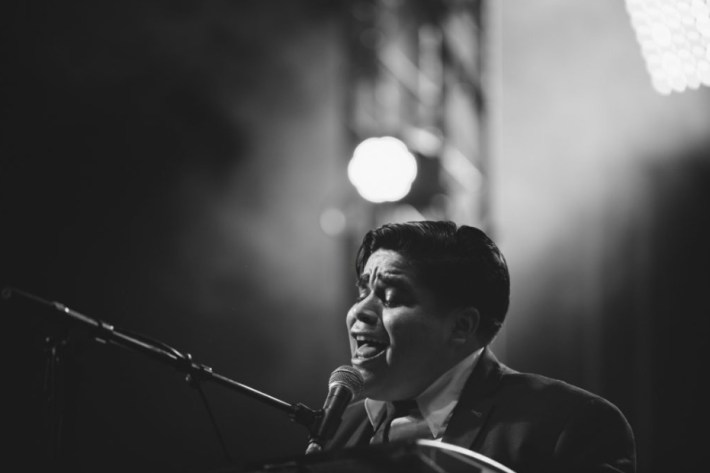
At the Crossroads of Musical Cultures
Today, Joey Quiñones, a leading member of the outfit, Thee Sinseers, is arguably one of the architects of the modern Chicano Soul movement. As a student of the genre, he cites the ever-changing nature of the style of music. "It all ties into the R & B sound. It meshed all together," says Quiñones. Historically, nationally recognized rock acts such as Chuck Berry, Johnny Otis, Ike and Tina Turner, and Ray Charles played venues such as El Monte's Legion Stadium, and local musicians from the surrounding communities would serve as their backing band. El Monte, in particular, marks a special place in the Eastside sound. Art Laboe would broadcast his radio show live from Legion Stadium, alternately playing records and live performances of local artists such as Don & Dewey and Rosie & the Originals, Sam Cooke and Ritchie Valens. Later on, a compilation "Art Laboe's Memories Of El Monte: The Roots Of L.A. Rock And Roll'' would epitomize this point in musical history when concerts were non-segregated events, aimed at audiences of all backgrounds and walks of life, seeking to come together celebrating the music they loved. Released in 1968, the compilation's title track featured the group The Penguins (previously known for their hit "Earth Angel'') along with a young Frank Zappa.
Zappa's affinity to the Eastside sound was a result of growing up as a Southern California resident. This exposure to Chicano music would later lead to collaborations with Chicano musician Rubén Funkahuatl Guevara. While at an informal get-together, Guevara and Zappa would cross paths. At that point, Zappa had already released his "Cruising Ruben & The Jets" record, which referenced a fictional Ruben and the Jets. As a way to nudge the iconoclast musician, Guevara told Zappa that he was a doo-wop singer and that his name was Rubén. This strange coincidence led Zappa to offer Guevara that opportunity to make Zappa's fictional Rubén real. With Zappa's support, Guevara created his version of the group Ruben and the Jets. The group released two LPs, "For Real '' (1973) and "Con Safos" (1974). As a touring act, the group opened up for the Mothers and other groups such as Tower of Power and Azteca.
The music of Ruben and the Jets reflected a shift in sound for Mexican American artists who sought to dig deeper with R&B and soul. As the Chicano Movement continued to build, there was a social and political awakening that occured within the artists themselves. More and more would claim "Chicano," a derogatory term that was reappropriated as a term of empowerment and expressing pride towards their Indigenous descent.
Caption: Learn more about Rubén Funkahuatl Guevara, a Chicano music pioneer whose collaborations with Frank Zappa and Cheech Marin, and his crossover to performance art shaped Mexican American culture. Watch this “Artbound” documentary.
Proud to Be Chicano
This reclamation would be most apparent in the music of El Chicano. The group epitomized the feelings of the Chicano civil rights movement, which culminated with the Chicano Moratorium march on August 29th, 1970, when tens of thousands took to the streets of East Los Angeles boycotting the Vietnam War.
El Chicano's blend of soul, jazz, rock, blues and salsa was totemic and is seen as in sync with what Chicanos and Chicanas felt at the time. The mixing of musical genres sounds more natural and organic to the process and uniting people who felt a commonality in the struggle and pride in their Mexican American identity. These sensibilities were also apparent with other musicians at the time, such as Carlos Santana and Linda Ronstadt, who would release "Canciones de mi Padre," a landmark album of traditional mariachi songs, which still holds the record for the best-selling non-English language album in U.S. history.
This sense of pride and unity in the struggle is still felt today with the current crop of musicians. "The experience of being a Chicano is unique because you are away from the motherland, but you aren't accepted in the land that you're born in. So my parents had a sense of pride when listening to that music because it represented them. It was an expression that was theirs, which was being a Chicano in America," comments Tony Martin, bassist of the soul/jazz/funk trio Brainstory.
For Martin, the music represents a unification felt across different races. He cites the example of Long Beach's own War. Most of the group members were African Americans but still maintained a kinship to the Chicano sound and its people. At the time, War was also sharing the stage with two ex-members of El Chicano, brothers Rudy and Steve Salas, forming the group known as Tierra. Tierra would be the first Latino band to have four songs on the song charts at one time, two of them in the top 100. The group produced a version of The Intruders' hit "Together," which remains essential listening in the Chicano/Mexican American songbook, not only for its message but also for how it expanded the vision of the Eastside sound to a cinematic level.
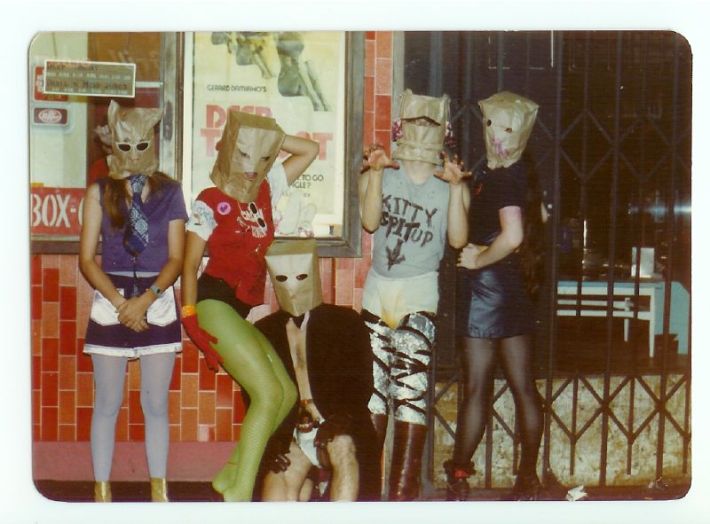
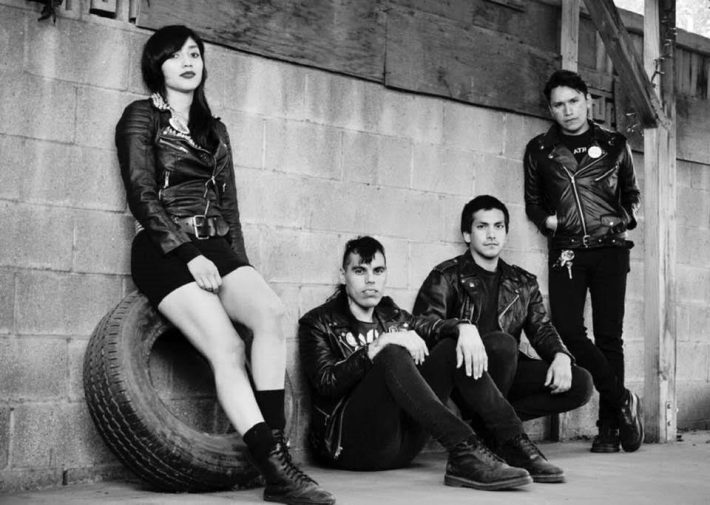
Border Crossings
In the 1970s Chicano rock was again rebirthed with the emergence of punk rock. Groups such as Plugz, Bags, Los Illegals, The Brat dominated the scene. To some Chicanos, punk represented a medium that they could make their own. Punk rock "makes it okay to be weird or different," says Tony Abarca, guitarist and the lead vocalist of the South Central L.A.-based Generacion Suicida. His attraction to punk came from the feeling of being an "outsider" — feelings no doubt shared by other artists in the early years of the scene
Abarca and others chafed within the traditional male-dominated Latin American, and by extension, Chicano cultures, that celebrates machismo "When you're punk, and you're colorful and wear tight pants as a guy. It gets almost dangerous in a way," says Abarca, "Everyone wants to fight you. Your dad doesn't like the way you look. Everyone questions your sexuality, and that's like a big deal within the community."
To be punk as Chicanos provides a sense of freedom to express yourself via certain artistic and creative sensibilities. "It eliminates any kind of boundaries that we may place on ourselves," says Abarca. It is easy to see the parallels between today's punk rock attitude and those of the scene's early days. It is philosophy that can even be found in musical forms outside of that "genre."
An Ongoing Evolution
No other group embraced this spirit of creating sound without borders or boundaries during the mid-to-late 1970s as Los Lobos, who managed to artfully connect both traditional Mexican music along with their brand of East L.A. rhythm and blues. Songwriter and guitarist Adrian Carmine cites Los Lobos as a strong influence on his sound and musicianship, which he describes as a "melting pot of genres." After seeing Los Lobos recently in the summer of 2021, Carmine remained impressed by the group's ability to incorporate various styles. "They were playing anywhere from rockabilly to norteño to boleros to rock and roll." Carmine, with his music both a solo artist alongside one of the current female innovators of modern Chicano Trish Toledo , celebrates the same type of music that Los Lobos pioneered. "I feel like that's what the word 'Chicano' does for the genre. You "automatically know this is our sound," says Carmine. Watching Los Lobos to Carmine felt as if it was like watching a family member pass down a recipe.

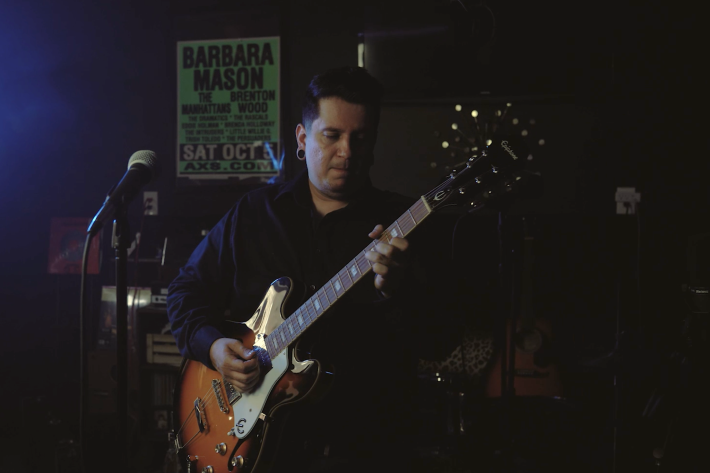
It is a musical recipe that continues to be passed down with a group like Los Lobos, whose influence continued throughout the 1980s and the '90s when other artists applied those lessons to their style of music. Ozomatli and Quetzal for example are taking that border-blurring central message and expanding it on their specific terms. Ozomatli represents the blending of both Latin and rock sounds but also adding hip-hop to the formula, operating in step to a cadre of Chicano MCs who came about during the '80s and '90s. Kid Frost, Lil Rob, Lighter Shade A Brown to name only a few. Updating the sound beyond the confines of any genre, Ozomatli provided a new wave of energy that would continue to make nods to the previous iterations of Chicano rock but also help define the next chapter.
Quetzal uses the traditional sounds of son jarocho, a regional folk music which originates from the Mexican state of Veracruz and a genre known for the mixing of Spanish roots music originating highlighting both Andalusian and Canary Islander melodies, and pairs it with the striking vocals of Martha Gonzalez. Their lyrics tackle a range of social and political themes honoring traditional styles of music while passing along a Chicano activist message as well.
Since the 2000s, Chicano rock has grown and expanded, continually opening doors and paving the way for younger generations. "As we keep empowering ourselves to push that limit, then we'll be opening doors for the next generation and the next generation," says Arenas, bassist for Chicano Batman. "And because we have Instagram and Bandcamp we have the self-starter tools for musicians to really put their business out there, then we can all create our own destiny."
